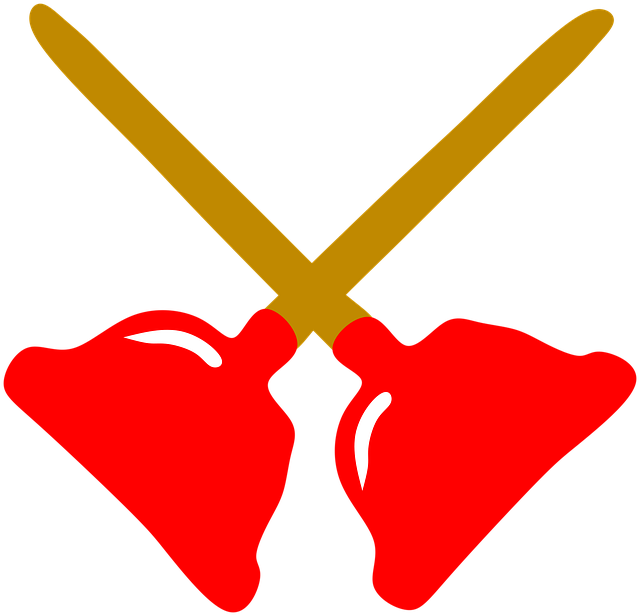Greasy clogs in household drains are addressed through various DIY methods, including using baking soda and vinegar or a plumber's snake. A plunger is effective for mild clogs, while more severe cases may require these alternative techniques. Chemical drain cleaners are avoided in favor of cost-effective, eco-friendly solutions. For stubborn clogs, professional plumbing services with specialized tools like the plumber's snake are recommended.
Struggling with stubborn, greasy clogs in your drains? Don’t panic! This comprehensive guide reveals powerful DIY solutions for clearing blocked drains naturally. We explore effective methods like using dish detergent as a surprise weapon against grease buildup.
Learn about alternative techniques including baking soda, vinegar, and the trusty plumber’s snake. Discover when it’s time to call a professional plumber and reclaim smooth-flowing drains. Get ready to conquer clogs with these proven, cost-effective, and eco-friendly drain cleaning methods!
- Understanding Greasy Clogs and Their Causes
- DIY Solutions: Using Dish Detergent Effectively
- Alternative Methods: Baking Soda, Vinegar, and Plumber's Snake
- When to Call a Professional Plumber
Understanding Greasy Clogs and Their Causes

Greasy clogs are a common household issue that can be both annoying and frustrating. Understanding their causes is the first step in finding an effective solution. These clogs often result from the accumulation of grease, food scraps, and other greasy substances that stick to the insides of pipes. This buildup occurs especially in kitchen drains where oil and fat from cooking are washed down the sink without proper disposal or cooling.
While using a plunger can be a quick fix for mild cases, more severe clogs may require a different approach. Natural unclogging methods like combining baking soda and vinegar are popular DIY solutions. They create a foaming reaction that helps break down grease and clear debris. For tougher obstructions, a plumber’s snake—a flexible metal cable with a hook at the end—can be used to manually remove the clog or break it apart. These methods offer cost-effective alternatives to chemical drain cleaners, and they’re better for the environment too.
DIY Solutions: Using Dish Detergent Effectively

When it comes to tackling greasy clogs, many people turn to conventional drain cleaners, but a simple and effective DIY solution is often closer than you think – dish detergent. This everyday household item can be a powerful ally in your battle against blocked drains. Not only is it more environmentally friendly than chemical-laden store-bought cleaners, but it’s also cost-effective and readily available.
The magic lies in the surfactants present in dish detergent, which help to break down grease and grime. To use this natural unclogging method, pour a generous amount of dish detergent into the drain, followed by hot water. The combination will often be enough to dislodge the clog. For tougher cases, try using a plunger before or after applying the detergent to help loosen the buildup. Alternatively, mix baking soda and vinegar for a natural cleaning duo that can effectively clear out stubborn clogs without resorting to harsh chemicals. Even a plumber’s snake, when used with caution, can be a DIY tool to navigate through the drain’s labyrinthine paths to dislodge any remaining obstructions.
Alternative Methods: Baking Soda, Vinegar, and Plumber's Snake

When it comes to tackling greasy clogs, many turn to commercial drain cleaners, but there are effective and eco-friendly alternatives that can clear your pipes naturally. One such method involves a combination of baking soda and vinegar, two common household ingredients. By mixing these substances, you create a chemical reaction that can help break down grease and other stubborn debris. To use this DIY approach, simply pour 1/2 cup of baking soda into the drain, followed by 1/2 cup of white vinegar. The fizzing action indicates the reaction is working its magic, and after 30 minutes, you can flush with hot water.
Another tool in your natural unclogging arsenal is a plumber’s snake, also known as a auger. This hand-cranked device is a convenient and cost-effective way to remove hair, soap scum, and other buildup from drains without resorting to harsh chemicals or expensive professional services. To use a plumber’s snake, feed the flexible metal cable down the drain until it reaches the clog. By turning the handle, you can break up and dislodge the blockage, allowing it to pass through the pipe naturally. This method is especially useful for stubborn clogs that don’t respond to plunging or the baking soda and vinegar treatment.
When to Call a Professional Plumber

If your DIY attempts to clear a greasy clog with methods like plunging, baking soda and vinegar, or using a drain snake have been unsuccessful, it may be time to consider professional help. While many homeowners opt for natural unclogging methods first, there are clogs that require specialized tools and expertise to remove safely and effectively.
A plumber?s snake, also known as a drain auger, is a long, flexible cable with a hooked or spiral tip designed to break up and dislodge obstructions in pipes. If your clog is particularly stubborn or located further down the pipe, a plumber will have the necessary tools and knowledge to navigate these tight spaces and clear the blockage without causing damage to your plumbing. Additionally, professional plumbers can diagnose more complex drain issues that may not be immediately apparent, such as broken pipes, root intrusion, or structural problems in your home’s drainage system.
